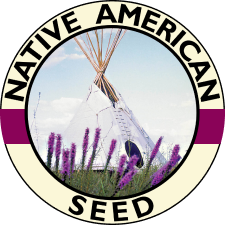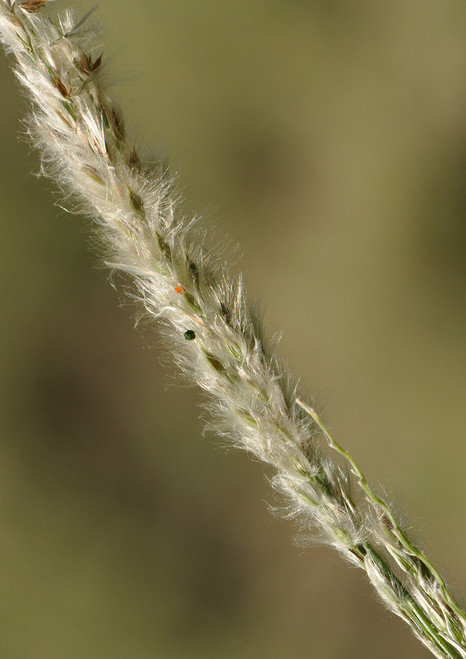This warm season perennial grows up to 2 feet, with 3 to 4 inch silvery plume-like seed heads borne on taller stems. Thrives on rocky limestone slopes as well as heavier soil areas from Nebraska, Colorado and Missouri down to Mexico. Fills in fast on disturbed and abandoned fields, holding and building soil by spreading fibrous roots. Grows where nothing else will!
The Natives are Friendly
Cane Bluestem, Bothriochloa barbinodis, improves any landscape where it is planted. Landowners will love it for its forage and aesthetic value. Its choice forage value has often been misjudged because livestock will only eat the nutritious leaves and not the seed producing stems that appear in the fall. Landowners who have recently cleared cedar breaks will also enjoy Cane Bluestem because it is one of the few grasses that will absolutely thrive in these barren areas. It grows in the most challenging conditions, is very drought resistant and excellent for erosion control.
Native American Seed actually got its genetic start for this seed from a caliche parking lot in downtown Junction, Texas. The little tufted seed heads in the fall will endear the most discriminating landscape enthusiast whether planted in a pot or in beds. The seed heads turn a silky white in the fall when ripe. On those early fall mornings when you can see the morning dew reflected off the silky white tufts, you can feel the beauty and peace sink deep into your soul. After the seeds are fully mature nature will use the wind to disperse the seeds for future generations. This native is a warm season perennial bunch grass.
It ranges from California to Florida and from Central U.S. to Mexico and is often used as a range indicator species. It will only be found on ranges that have been well managed and not overgrazed. In the past, the majority of the natural prairies were composed of a wide variety of bluestems and many other grass and wildflower species. Grasses are not only used for food and nesting, but also for shelter. Birds such as quail and small mammals often hide from predatory animals such as hawks under the bunch grasses. I encourage everyone to plant as many different native species as they can in order to create a wide diversity for local wildlife to enjoy.
Cane Bluestem, Bothriochloa barbinodis, improves any landscape where it is planted. Landowners will love it for its forage and aesthetic value. Its choice forage value has often been misjudged because livestock will only eat the nutritious leaves and not the seed producing stems that appear in the fall. Landowners who have recently cleared cedar breaks will also enjoy Cane Bluestem because it is one of the few grasses that will absolutely thrive in these barren areas. It grows in the most challenging conditions, is very drought resistant and excellent for erosion control.
Native American Seed actually got its genetic start for this seed from a caliche parking lot in downtown Junction, Texas. The little tufted seed heads in the fall will endear the most discriminating landscape enthusiast whether planted in a pot or in beds. The seed heads turn a silky white in the fall when ripe. On those early fall mornings when you can see the morning dew reflected off the silky white tufts, you can feel the beauty and peace sink deep into your soul. After the seeds are fully mature nature will use the wind to disperse the seeds for future generations. This native is a warm season perennial bunch grass.
It ranges from California to Florida and from Central U.S. to Mexico and is often used as a range indicator species. It will only be found on ranges that have been well managed and not overgrazed. In the past, the majority of the natural prairies were composed of a wide variety of bluestems and many other grass and wildflower species. Grasses are not only used for food and nesting, but also for shelter. Birds such as quail and small mammals often hide from predatory animals such as hawks under the bunch grasses. I encourage everyone to plant as many different native species as they can in order to create a wide diversity for local wildlife to enjoy.








